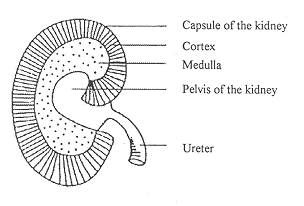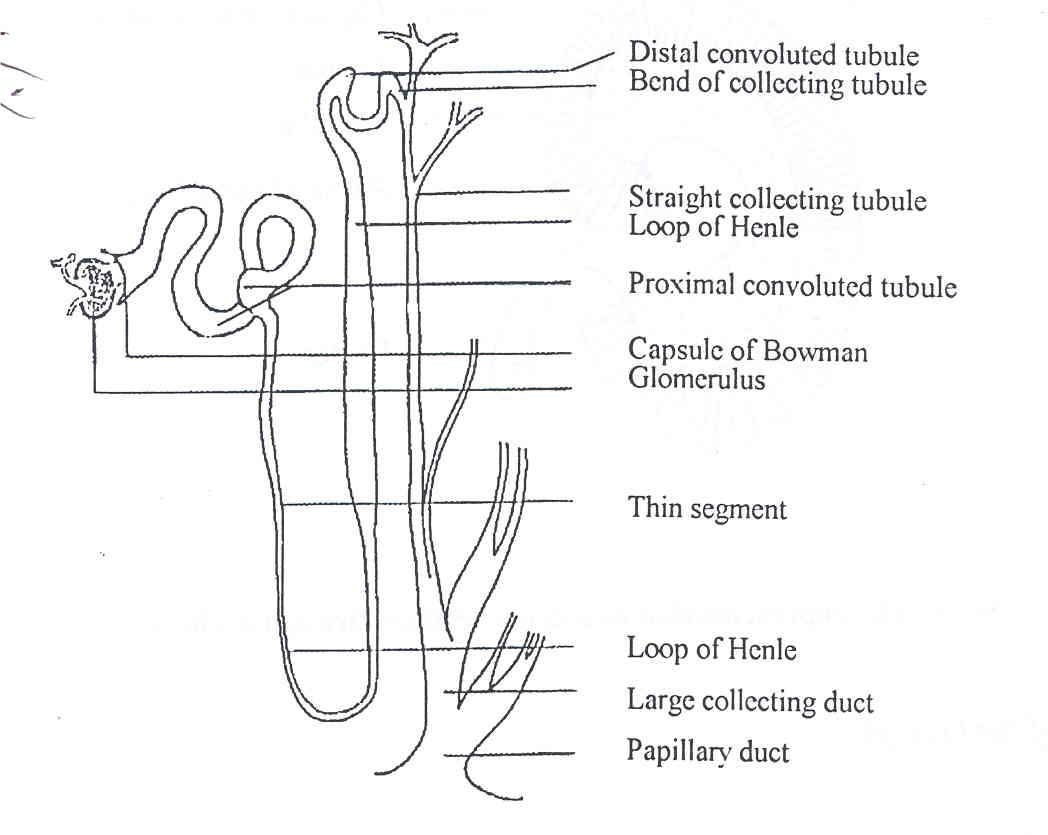Completion requirements
View
The functions of the kidneys:
- The kidneys excrete substances, which are formed by metabolism, especially nitrogen- and sulphur-containing substances.
- Conserve the water equilibrium of the body, especially with respect to plasma volume.
- Regulate the acid-based equilibrium (pH) of the body by excretion of non-volatile acid and base radicals.
- Control blood pressure.
- Excrete poisonous substances and medicines, had been taken in by animals.
- Form specific substances such as ammonia and hippuric acid.
The following diagrams show the cross-sectional structure of the kidney and its internal structure.

The structure of the kidney

The microscopic structure of the kidney
The following could result from chronic kidney damage:
- Increase in the volume of urine
- Decrease in the concentration of urine
- Protein in the urine
- Presence of glucose and other substances in the urine
- Dehydration
Substances such as glucose can, however, be excreted in the absence of kidney damage e.g. in the case of diabetes mellitus in human beings. The reason for this is that blood glucose reaches such high levels that total resorption cannot take place. The urine produced, leaves the kidneys through the urethras. The urethras join the bladder, where urine is stored until passed out through the single urethra.